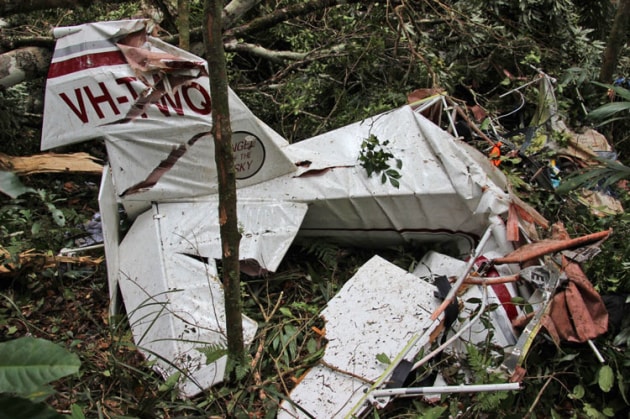The ATSB has found that the pilot of a Wittman Tailwind likely became spatially disoriented before the aircraft crashed near Casino, NSW, in January 2020.
The pilot of Tailwind VH-TWQ was trying to get through to Boonah QLD from Evans Head NSW on a VFR flight when it encountered instrument conditions en route. After making a precautionary landing at Casino, the pilot took off again, but crashed into high terrain 40 nm NW of the airport. Both the pilot and passenger were killed in the crash.
After leaving Evans Head, the pilot flew as far as Kyogle before encountering IMC, electing turn south and land at Casino. The pilot and passenger remained at Casino for 45 minutes before taking off towards Warwick, a flight path that took them over the McPherson Range.
The ATSB found that the pilot, who was operating under visual flight rules, departed Casino with a high risk of encountering forecast cloud,” said ATSB Director Transport Safety Stuart Macleod.
“En route to Boonah, the aircraft encountered reduced visibility and the pilot likely became spatially disorientated, resulting in a loss of control.”
Data from the last four minutes of the flight showed the aircraft’s groundspeed varied between 109 and 175 knots, while the rate of climb and descent varied between +2400 fpm and -2400 fpm.
The ATSB said the abrupt speed and altitude reversals and the operation of the aircraft over and near its speed limitations indicated a loss of control.
A final data point showed the aircraft descending at 1800 fpm while travelling at a groundspeed of 172 knots, tracking towards high ground.
“Once airborne, the pilot would have been in a position to assess the in-flight visibility and cloud and rain in the intended direction of travel," Macleod said. "However, it is possible that continuing to fly towards an area of low cloud was influenced by the inherent challenges of assessing low visibility conditions.
“Weather-related decision making can be highly complex and therefore more prone to errors. Unfortunately, weather-related general aviation accidents remain one of the ATSB’s most significant causes for concern.”
The full report is on the ATSB website.



